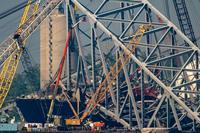![]() Some weapons don't age well. Designed to counter the threat of the day, they go into mothballs when the threat evaporates. Take the Bradley Linebacker, an M-2 Bradely infantry fighting vehicle with a Stinger anti-air missile module attached to the turrent. The Linebacker was designed to protect armored formations against Soviet attack jets and helicopters. Well, the Soviet Union went away in 1989 and the Bradley Linebacker lasted just a few years before the Army began stripping off the Stingers and returning them to their original role hauling troops.
Some weapons don't age well. Designed to counter the threat of the day, they go into mothballs when the threat evaporates. Take the Bradley Linebacker, an M-2 Bradely infantry fighting vehicle with a Stinger anti-air missile module attached to the turrent. The Linebacker was designed to protect armored formations against Soviet attack jets and helicopters. Well, the Soviet Union went away in 1989 and the Bradley Linebacker lasted just a few years before the Army began stripping off the Stingers and returning them to their original role hauling troops.
Other weapons just keep on ticking, years or decades past their planned expiration date. The Boeing B-52 is still our primary bomber 50 years after its introduction. The Vietnam-era M-14 rifle has enjoyed a recent revival for squad marksmen in Iraq. And the Navy's Aegis radar, built by Lockheed Martin and designed to defend aircraft carriers from Soviet missile attacks, has reached 20 years and 100 units delivered, as I describe over at Military.com. These days the powerful radar (the stop-sign-shaped thingy on the pictured cruiser's superstructure) has taken on roles in the littorals and against ballistic missiles. In fact, of all our ballistic missile defense systems, Aegis coupled with the Raytheon SM-3 missile is the only one that works consistently.
The key to Aegis' longevity is its raw power and smart program management. Aegis did incremental "spiral development" years before that was a Pentagon standard. And Aegis has adopted a commercial open architecture in order to keep up with rapid advancements in computing:
Engineers at [Lockheed Martin's] Moorestown [facility in New Jersey] have been ripping out Aegis' traditional military-grade computers and replacing them with cheaper, faster commercial computers such as IBM's Blade server. Going to so-called "commercial off-the-shelf" computers means Aegis can be upgraded every time IBM comes out with a faster computer -- say, every two or three years. This helps the Navy keep up with the ever-increasing pace of technological development.
"We have not reached the limit of Aegis," [Aegis engineer Alan] Ostrow says.
-- David Axe








